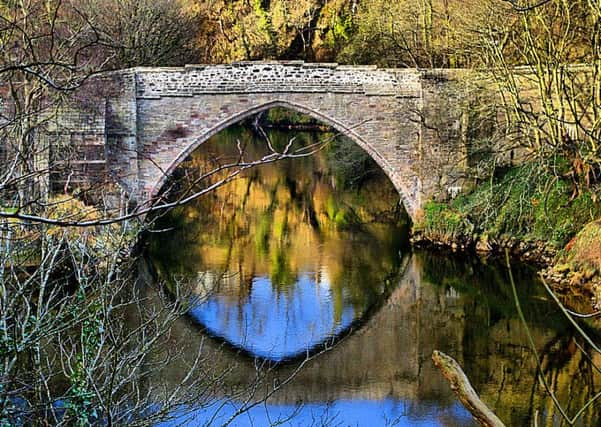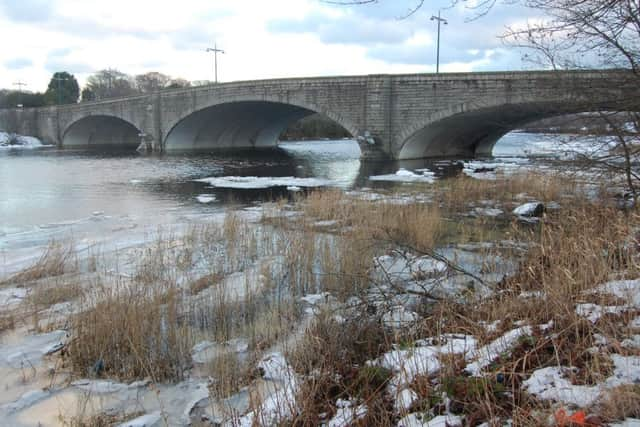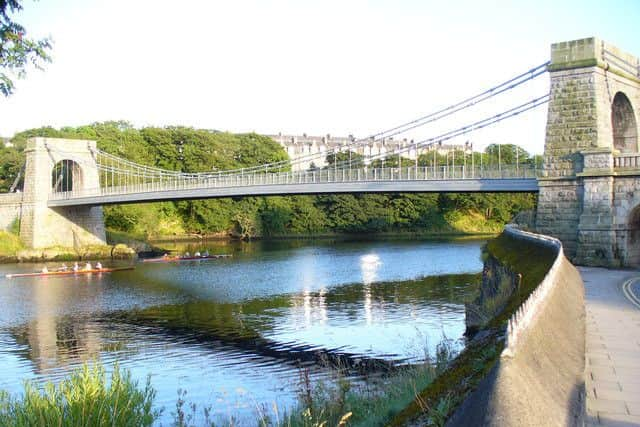History of Aberdeen’s Dee and Don crossings


The new Third Don Crossing scheduled for a February 2016 opening is an attempt to alleviate some of Aberdeen’s traffic woes, meaning that drivers will not have to negotiate the city’s notorious Haudagain roundabout when travelling north or south through the city once it opens.
The Haudagain - once nominated as the worst roundabout in the UK- isn’t the city’s only traffic blackspot, with Garthdee roundabout also the site of many delays thanks to the elderly bridges that permit access to and from the city over the River Dee.
Advertisement
Hide AdKnown as the Brig’ ‘o Dee to many Aberdonians, the Bridge of Dee carries the A90 into Aberdeen over its seven granite and sandstone-ribbed arches and was first built in the 16th century. Bishop William Elphinstone, one of the founding members of the University of Aberdeen, gave £20,000 of funding towards the project before his death, with the original coats of arms and passing places remaining to this day.


During the period of the Industrial Revolution, the bridge was widened from four to eight metres under the designs of Aberdonian-born John Smith, who also designed the now-lost St Nicholas Street that connected Union Street and George Street.
The Class A listed bridge is placed at what was once Aberdeen’s boundary and the site of a fierce battle between Royalists and Covenanters in 1639, with extensive local history provided by The Doric Columns.
Further along the river lie both the King George VI and Wellington Suspension bridges, with the King George VI structure linking Great Southern Road to the Kincorth roundabout. Well after the original foundation stone had been laid by Lord Provost Edward Watt in 1938, a video made by British Pathe shows Queen Elizabeth opening the bridge to applause in 1941.
The Wellington Suspension Bridge is now a pedestrianised crossing after a restoration project was completed in 2007. Connecting the neighbourhoods of Ferryhill to Craiglug in Torry, the chain-link suspension bridge is also the work of architect John Smith.


Built in 1830, the structure was closed to traffic in 1984 and pedestrians in 2002 as it fell into disrepair. The original toll house was demolished in the mid-1960s, with this bridge providing a safe crossing point for cyclists and pedestrians today.
Advertisement
Hide AdThose in the north of Aberdeen also have several ways of crossing the River Don, with the eponymous Bridge of Don giving its name to the northern suburb of the city after its completion in 1830. Also penned by John Smith, the bridge was extensively widened to 20 metres at the end of the 1950s with a new bridge built parallel to it now carrying southbound traffic.
The all-granite structure is also close to Donmouth Nature Reserve and a variety of leftover World War II fortifications, including a pill box and anti-tank blocks.
Advertisement
Hide AdWhile it may no longer be used to the same extent as it once was, the city’s Brig ‘o Balgownie is a stunning piece of Gothic design. Featuring a single arch spanning 12 metres, the granite and sandstone structure used to be a major thoroughfare for armies and traders alike. It is rumoured to have been commissioned by none other than Robert the Bruce and was featured by Aberdeen Grammar School-educated Lord Byron in a canto of “Don Juan”. It is now closed to traffic but is still a popular landmark within the city.
The Third Don Crossing, under construction by Balfour Beatty, has had its construction process partially-documented by Innovair on YouTube.